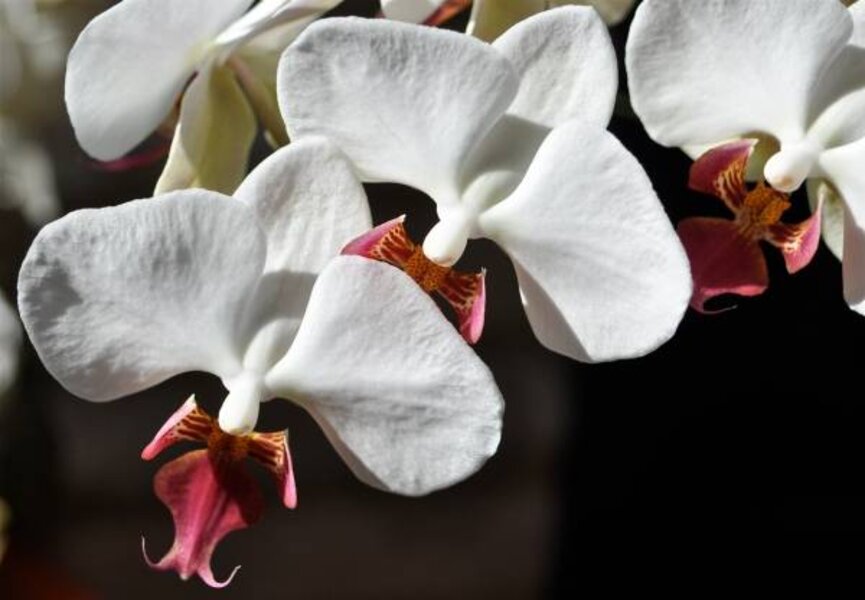A simple way to water orchids
Loading...
The tendency is to equate orchids with steaming jungles, fancy corsages, and – to those who love old mysteries – a rotund Nero Wolfe tending his rare beauties in a glass garden.
But not so for thousands of casual indoor gardeners across the country. They think of orchids not in relation to the tropics or fat, fictional detectives, but in terms of an addictive and rather uncomplicated hobby.
In fact, despite myths surrounding the aristocrat of flowers, those who’ve tried growing orchids insist they aren’t terribly finicky -- as long as you get the water requirements right.
The image of temperamental, high-priced orchids is rooted in history and legend. Confucius wrote that orchids were flowers of great refinement to be held in high esteem. Until the 18th century, orchids were revered and heralded as medicinal remedies and aphrodisiacs.
During the late 1700’s, exotic orchids imported from mysterious parts of the globe captivated plant fanciers. Serious collectors were willing to pay thousands of dollars for an unusual specimen. Orchid raising became considered the passion of wealthy hobbyists.
Fortunately, these days you don’t need to take out a second mortgage to start your orchid collection. That’s a good thing because early in snowy February, I desperately needed to see something in bloom.So I bought a pretty Phalaenopsis (Nero’s fave) orchid at a local store and hoped I’d guess right as to how much water it might need.
Then I got home and noticed the simple watering instructions on the plant tag: Just add ice. I wanted to know how anyone came up with such a brilliantly simple solution, so I contacted the growers.
Emily Chockley of Green Circle Growers explained the company was looking for a way to simplify care and encourage more people to give orchids a try:
“After multiple tests at our greenhouse facility and with consumers, we’ve found that three ice cubes (equivalent to ¼ cup of melted water) for a Just Add Ice Orchid is the perfect amount of water per week,” she said.
Orchids hate to stay constantly wet, so ice cubes are a great solution because they melt slowly enough to distribute the water throughout the soil, leaving little left at the bottom of the pot, Ms. Chockley went on to explain. And ice cubes melt quickly enough to not harm the roots.
I wondered about using ice cubes in the dead of winter, but the company says outside weather conditions should not dictate watering practices.
The only exception is when the orchid is placed in a very bright location where it gets lots of sunlight. In that case, the plant may need more than three ice cubes per week.
One way to know if the plant is getting enough water is to look at the roots in the pot. If the roots appear green, then the orchid is well watered. However, if the orchid roots appear white or grayish, then the orchid can use additional ice cubes.
Although I scratched my head at first, the ice cube watering method has certainly done the trick for my orchid. The foliage is gorgeous and it has been loaded with blooms for over two months. In fact, I counted 21 flowers this morning.
Pretty cool!
PSSSST: This warning comes from someone who believes there is always room for one more rose: Orchids can cast a spell and a casual interest might just become a relentless obsession. One hobbyist I read about started with a single plant in her living room and now has three jam-packed greenhouses.
Lynn Hunt, the Rose Whisperer, is one of nine garden writers who blog regularly at Diggin' It. She's an accredited horticultural judge and a Consulting Rosarian Emeritus for the American Rose Society. She has won dozens of awards for her writing in newspapers, magazines, and television. She grows roses and other plants in her garden on the Eastern Shore of Maryland. You can follow her on Twitter.
-----
To read more by Lynn, click here. The Monitor’s main gardening page offers articles on many gardening topics. Access all our blog posts here. (These URLs have recently changed, so you may want to bookmark them so you can return easily.) See also our RSS feed. You may want to visit Gardening With the Monitor on Flickr. Take part in the discussions and get answers to your gardening questions. If you join the group (it’s free), you can upload your garden photos and enter our current contest, photos of spring.





